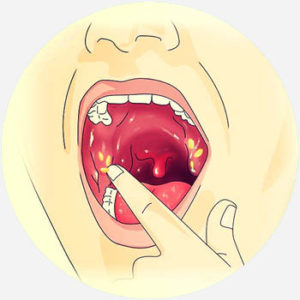Tech & Science dictionary
tonsil stones
[ton-suh l stohnz]
What does tonsil stones mean?
Tonsil stones are small yellow or white lumps embedded in the tonsils. They result from bacterial or fungal build-up that forms into a nasty-smelling—but generally—harmless mass.
Related words:
- tonsilloliths
- tonsil pimples
Where does tonsil stones come from?

Tonsil stones are one of several ways in which solid material can build up in the body to form hard masses in soft tissue—the most well-known of these being kidney stones. In the case of tonsil stones, the culprit can be food or strep throat.
The use of the word stone to describe these masses relates to the Latin scientific term, calculus (which means “pebble” or “little stone” and also a source of much pain in high school). Tonsil stones are formally called tonsilloliths, literally “tonsil stones.”
The particular term tonsil stone itself appears in medical literature in the late 19th century, although the phenomenon had be discussed under other names in medical journals as far back 1800 and certainly experienced millennia before.
In addition to mild discomfort, tonsil stones are known to produce a foul smell that cause bad breath and a funky taste in the mouth. Today, tonsil stones may be removed by a doctor or dislodged with the gargling of specialized tonics.
Examples of tonsil stones
Who uses tonsil stones?
Tonsil stones is mostly used in formal contexts by patients and doctors, particularly Ear-Nose-Throat physicians and specialist dentists. Some people also like to watch videos of tonsil stones being, um, “popped” on YouTube. Because the internet.
Note
This is not meant to be a formal definition of tonsil stones like most terms we define on Dictionary.com, but is rather an informal word summary that hopefully touches upon the key aspects of the meaning and usage of tonsil stones that will help our users expand their word mastery.